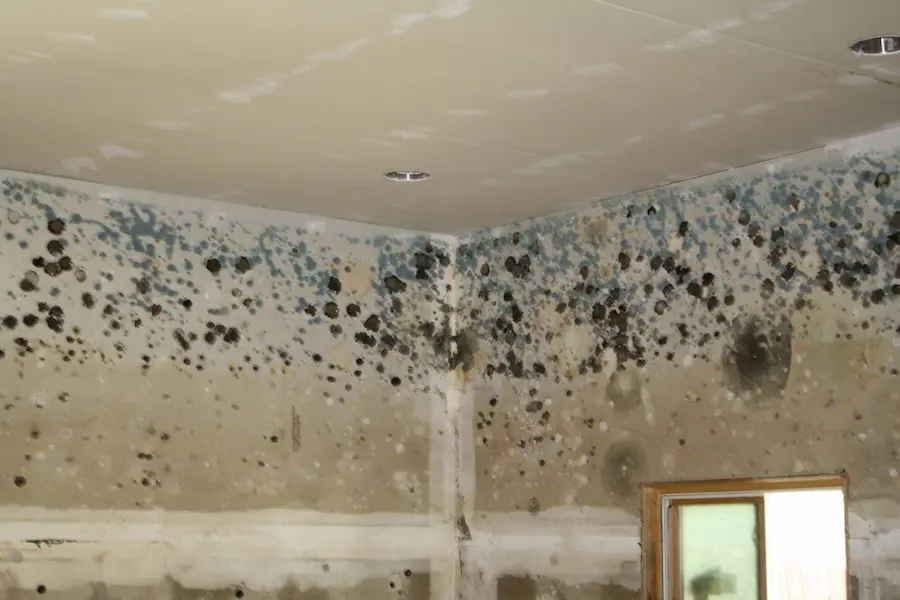Key Takeaways:
- Understanding the relationship between mold and humidity is critical for effective prevention.
- Promptly identifying signs of mold can prevent extensive damage and negate potential health concerns.
- Humidity control, regular inspections, and knowing when to enlist professionals are vital to combating mold in humid climates.
Table of Contents
Understanding Mold and Humidity
The complexity of mold is tied closely to its favored growing conditions(dampness and warmth), often found in abundance within humid climates. While playing an essential role in our ecosystem, these microorganisms are unwelcome houseguests with the potential to create structural damage and prompt alarming health issues. By implementing effective humidity control within one’s living space, homeowners can inhibit mold growth and create a healthier environment.
Most residential buildings are vulnerable to high-humidity areas, like basements, kitchens, and bathrooms. Particularly, those living in places like New Jersey seek solutions for mold due to the state’s intrinsic humid air. For residents battling these issues, mold remediation in New Jersey becomes an essential service. However, regardless of where one resides, maintaining a dwelling with balanced humidity is critical in precluding mold growth.
Signs and Symptoms of Mold Infestation
Early detection of mold is paramount to staving off its widespread manifestation. Visual cues are often the first indicators, with mold presenting as unsightly blotchy areas on walls, ceilings, and corners. These discolored patches could range from black and green to white and orange, occurring in various textures. Olfactory signs are just as revealing, as mold is frequently accompanied by a distinctive musty, earthy smell that is hard to ignore.
The impact of mold isn’t limited to one’s surroundings; it can extend to individuals living in the affected areas. When abnormal health symptoms such as inexplicable allergic reactions, respiratory difficulties, or a continual sensation of unwellness occur parallel to suspected mold growth, it’s prudent to explore the possibility of mold being the underlying culprit. It is crucial in houses with small children, elderly residents, or individuals with weakened immune systems, as these groups may be more susceptible to mold growth.
Key Factors Contributing to Indoor Mold Growth
A perfect storm of humidity, warmth, and organic material provides the ideal environment for mold to flourish. Invisible to the naked eye, spores loom in the air, waiting for suitable conditions to settle and proliferate. Areas within homes that typically struggle with dampness and inadequate air exchange are predisposed to mold infestations. Ordinary mold residences include crawl spaces, basements, and even behind walls where pipes may condense.
Prior incidents involving water, like a roof leak during heavy rainfall or a pipe bursting, can leave lasting impressions if not addressed adequately. Lingering moisture from such events offers a fertile breeding ground for mold. Homeowners should pay particular attention to past water damage and remain vigilant in previously affected areas.
Strategies for Reducing Humidity in the Home
The battle against indoor humidity begins with the promotion of proper air exchange. Installing exhaust fans set to release moisture-laden air from rooms within the house, like the kitchen or laundry room directly outside, will increase ventilation. It is necessary to curb the stagnation of damp air, which molds rely on for growth.
Physical appliances such as dehumidifiers and air conditioners are indispensable to lower humidity. These devices actively remove excess moisture from the air, helping maintain an environment less hospitable to mold. In the long run, regular preventative measures like ensuring plumbing fixtures are free of leaks, keeping gutters clear of obstructions, and maintaining the home’s exterior waterproofed will aid in battling mold.
Mold Remediation: Identifying When It’s Necessary
Identifying the necessity for professional mold remediation is critical in maintaining a safe and comfortable home environment. Signs that it is time to call in experts include spreading mold beyond what can be handled with household cleaning techniques or if the mold returns rapidly after DIY efforts. For those dealing with a significant mold outbreak, which can compromise a home’s structure and air quality, the most effective solution is often to solicit professional mold remediation services.
DIY Solutions for Minor Mold Problems
Tackling a minor mold issue only sometimes requires professional intervention. For small-scale problems, homeowners can use household items like distilled white vinegar or a baking soda solution to clean the affected regions. These substances have natural antifungal properties and are less invasive than commercial mold removers. When used regularly, they can effectively manage surface mold on non-porous materials and deter future growth. However, it’s crucial for homeowners to understand the limits of their capabilities and to recognize the point at which professional remediation is warranted to address a mold situation thoroughly.
Long-Term Prevention Measures
Long-term mold prevention is a systematic approach encompassing strategic home care and continuous monitoring of the environment. Monitoring devices like hygrometers can be utilized in critical home areas to monitor humidity levels. Consistent readings above the optimal range should be addressed promptly to prevent mold. Home improvements that enhance a residence’s capacity to withstand moisture, such as quality insulation, vapor barriers, and waterproof coatings, can prevent mold and contribute to overall energy efficiency and comfort.
Selecting Professional Mold Remediation Services
Selecting a professional mold remediation service becomes critical when the situation escalates beyond self-remediation efforts. Choosing a company with the proper credentials and a robust track record of successfully remediating homes is imperative. Transparency in the process and clear communication about the remediation methodology and expected results are essential. A professional service should provide more than just immediate relief; it should also offer insightful recommendations for preventing future mold issues.
Familiarizing oneself with the intricacies of mold remediation is also valuable.
Appreciate it!

